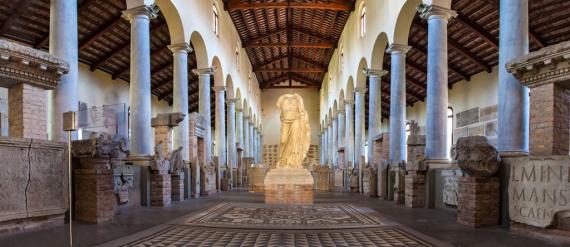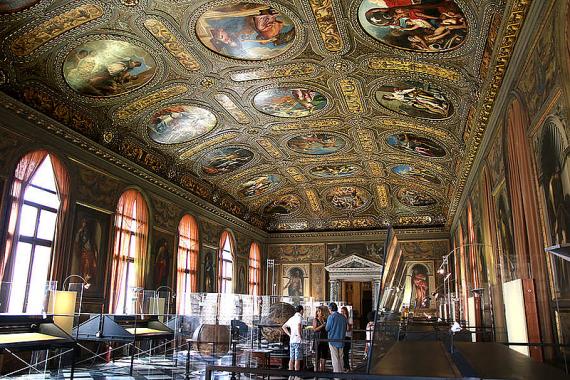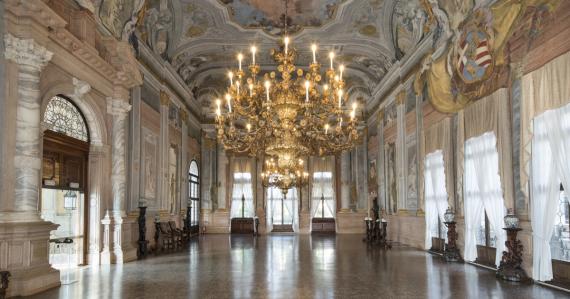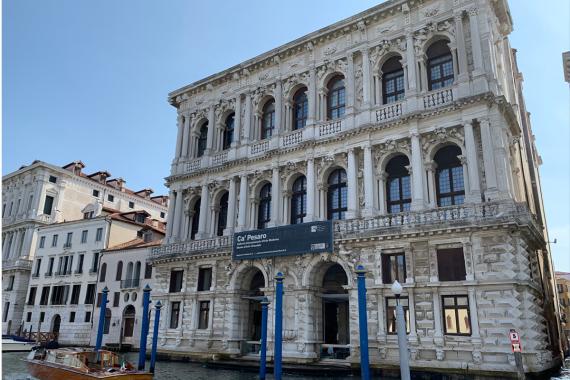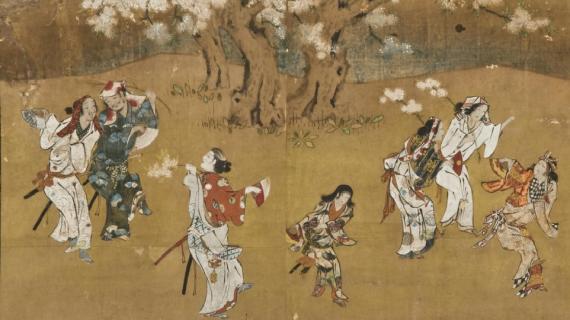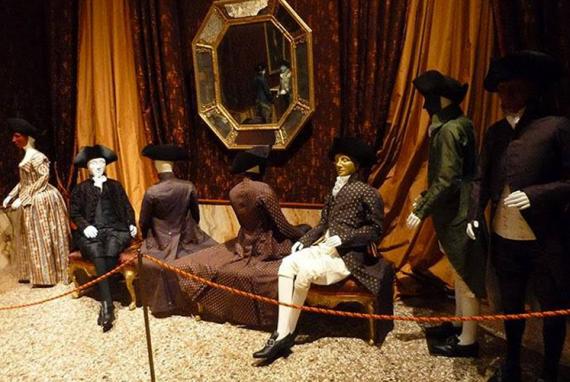The Archeological Museum in Saint Mark’s Square has an important collection of Greek and Roman sculptures, gems and coins. It includes also the archeological collection of the Correr Museum, which is Egyptian and Assyro-Babylonian antiques.
The library, by Jacopo Sansovino, was built and decorated with the most well known painters’ works of the Renaissance between 1537 and 1560 to worthily accommodate the Greek and Latin codes given to the Venetian Republic by the Cardinal Bessarione in 1468. Still today it belongs as monumental office to the Marciana National Library, together with the building of the Zecca, where there are the reading rooms and the offices.
This temple of 18th century Venice, in the Palazzo Rezzonico overlooking the Grand Canal, by Longhena and Massari, keeps paintings of the greatest masters of this century, from Tiepolo to Rosalba Carriera, from Longhi to Guardi and to Canaletto, setted n a background with precious furnishings and ornaments of that century.
The international gallery of modern art is located in Ca’ Pesaro, the most important Baroque Venetian palace overlooking the Grand Canal by Baldassarre Longhena.
The Oriental Art Museum is located in San Stae, in the old Baroque palace of the Pesaro family overlooking the Grand Canal. Inside there is one of the most important European collections of Japanese art of the Edo period (1615-1868) gathered at the end of the nineteen century by Enrico di Borbone during a journey to Asia. The almost 36.000 pieces of oriental art in the museum have been gathered by Prince Henry IV, count of bardi, during his journeys to the Far East between 1887 and 1889. Inaugurated in 1929 and improved over the years, the museum has also sections for China and Indonesia: porcelains, jades, vase lacquers (such as the urushi ones), fabrics and an important collection of weapons of the XII-XIX century.
Palace Mocenigo in San Stae, is a gorgeous example of private Venetian architecture of the beginning of the 17th century. It contains precious 18th century furniture and paintings. It is the seat of the Study Centre of the History of Fabrics and Costumes, and the Museum of the History of Fabrics and Costumes.

